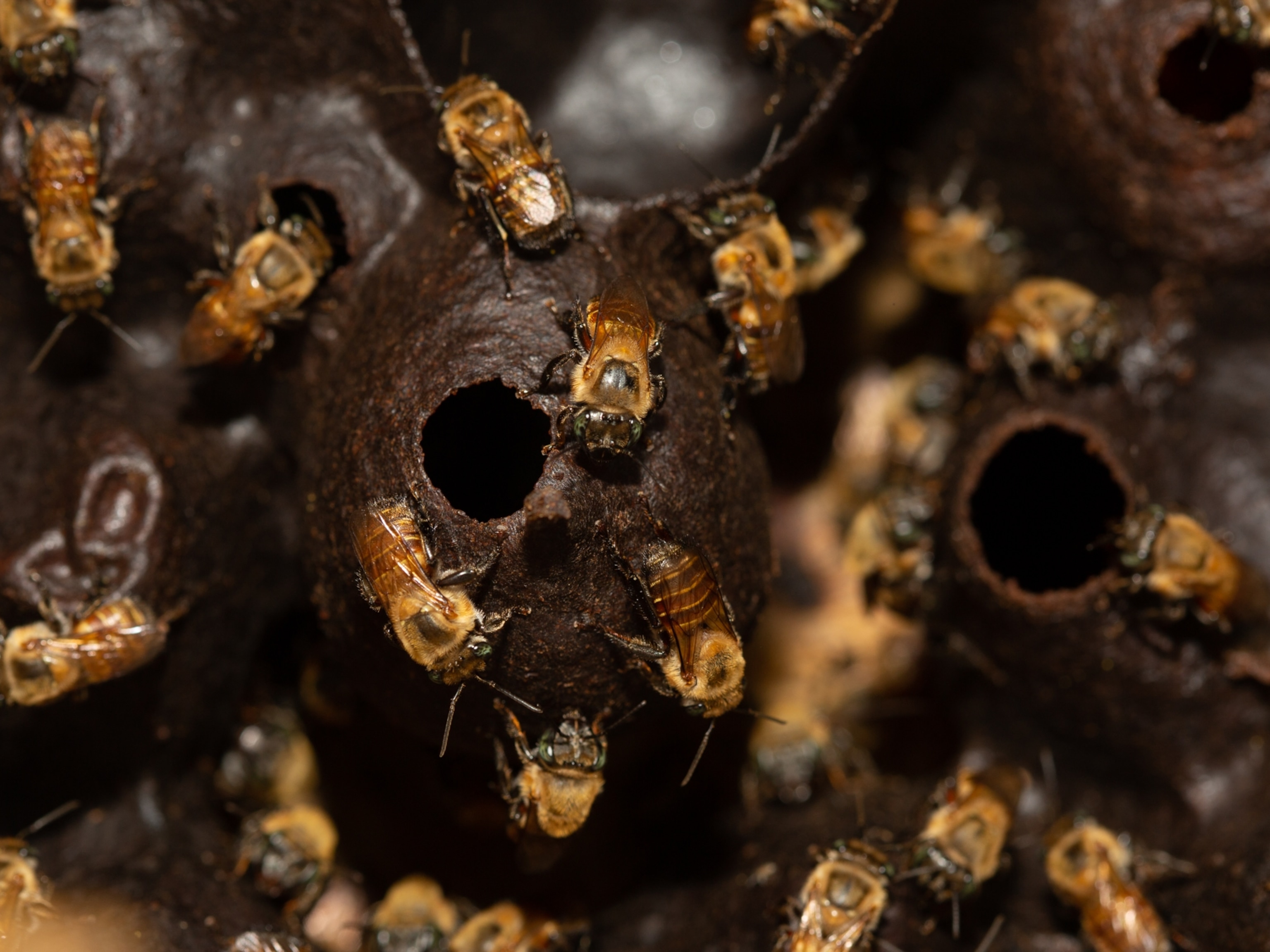Honey is one of our earliest sources of sweetness. Depictions of humans gathering honey date back 15,000 years. The word “honey” pops up in the Bible 61 times. Jars of honey were discovered in King Tut's tomb. In Henry V, written in 1599, Shakespeare pointed out that we have much to learn from the social insects, whose colonies can number up to 80,000 individuals. “For so work the honey-bees,” he said. “Creatures that by a rule in nature teach the act of order to a peopled kingdom.”
For as long as honeybees and humans have coexisted, the latter have been fascinated by the former.
Today, the honeybees’ work—and our fascination with it—is more important than ever. One-third of the world’s food supply is dependent on the pollination honeybees provide. But harsh environmental changes, rampant use of pesticides, and the spread of diseases are causing bees to die off at an alarming rate. In the past year, American beekeepers have reported losing, on average, an astounding 42.1 percent of their hives. (Read more: What happens if honeybees disappear?)
What can you do? Plenty! Plant or volunteer in a bee-friendly garden. Attend meetings of your local beekeepers’ association. If you spy a swarm, call a beekeeper—not an exterminator—to remove it. And keep your own bees. Regardless of where you live, there’s probably a place where you can keep bees. “Everyone should have two or three hives of bees,” Sue Hubbell writes in A Book of Bees. “Bees are easier to keep than a dog or a cat. They are more interesting than gerbils. They can be kept anywhere. A well-known New York City publisher keeps bees on the terrace of his Upper East Side penthouse, where they happily work the flowers in Central Park.”
At National Geographic headquarters in Washington, D.C., we have two hives of bees on a balcony overlooking the Washington Monument, just down the street from the hives at the White House.
In 2009, the United States Department of Agriculture declared that the third Saturday of every August would be recognized as National Honeybee Day. We put together some of our favorite photos of the beautiful insect to celebrate its importance in our lives and to raise awareness of its plight.
You May Also Like
Go Further
Animals
- This ‘saber-toothed’ salmon wasn’t quite what we thoughtThis ‘saber-toothed’ salmon wasn’t quite what we thought
- Why this rhino-zebra friendship makes perfect senseWhy this rhino-zebra friendship makes perfect sense
- When did bioluminescence evolve? It’s older than we thought.When did bioluminescence evolve? It’s older than we thought.
- Soy, skim … spider. Are any of these technically milk?Soy, skim … spider. Are any of these technically milk?
- This pristine piece of the Amazon shows nature’s resilienceThis pristine piece of the Amazon shows nature’s resilience
Environment
- This pristine piece of the Amazon shows nature’s resilienceThis pristine piece of the Amazon shows nature’s resilience
- Listen to 30 years of climate change transformed into haunting musicListen to 30 years of climate change transformed into haunting music
- This ancient society tried to stop El Niño—with child sacrificeThis ancient society tried to stop El Niño—with child sacrifice
- U.S. plans to clean its drinking water. What does that mean?U.S. plans to clean its drinking water. What does that mean?
History & Culture
- Séances at the White House? Why these first ladies turned to the occultSéances at the White House? Why these first ladies turned to the occult
- Gambling is everywhere now. When is that a problem?Gambling is everywhere now. When is that a problem?
- Beauty is pain—at least it was in 17th-century SpainBeauty is pain—at least it was in 17th-century Spain
- The real spies who inspired ‘The Ministry of Ungentlemanly Warfare’The real spies who inspired ‘The Ministry of Ungentlemanly Warfare’
- Heard of Zoroastrianism? The religion still has fervent followersHeard of Zoroastrianism? The religion still has fervent followers
Science
- Here's how astronomers found one of the rarest phenomenons in spaceHere's how astronomers found one of the rarest phenomenons in space
- Not an extrovert or introvert? There’s a word for that.Not an extrovert or introvert? There’s a word for that.
- NASA has a plan to clean up space junk—but is going green enough?NASA has a plan to clean up space junk—but is going green enough?
- Soy, skim … spider. Are any of these technically milk?Soy, skim … spider. Are any of these technically milk?
- Can aspirin help protect against colorectal cancers?Can aspirin help protect against colorectal cancers?
Travel
- What it's like to hike the Camino del Mayab in MexicoWhat it's like to hike the Camino del Mayab in Mexico
- Is this small English town Yorkshire's culinary capital?Is this small English town Yorkshire's culinary capital?
- Follow in the footsteps of Robin Hood in Sherwood ForestFollow in the footsteps of Robin Hood in Sherwood Forest
- This chef is taking Indian cuisine in a bold new directionThis chef is taking Indian cuisine in a bold new direction














